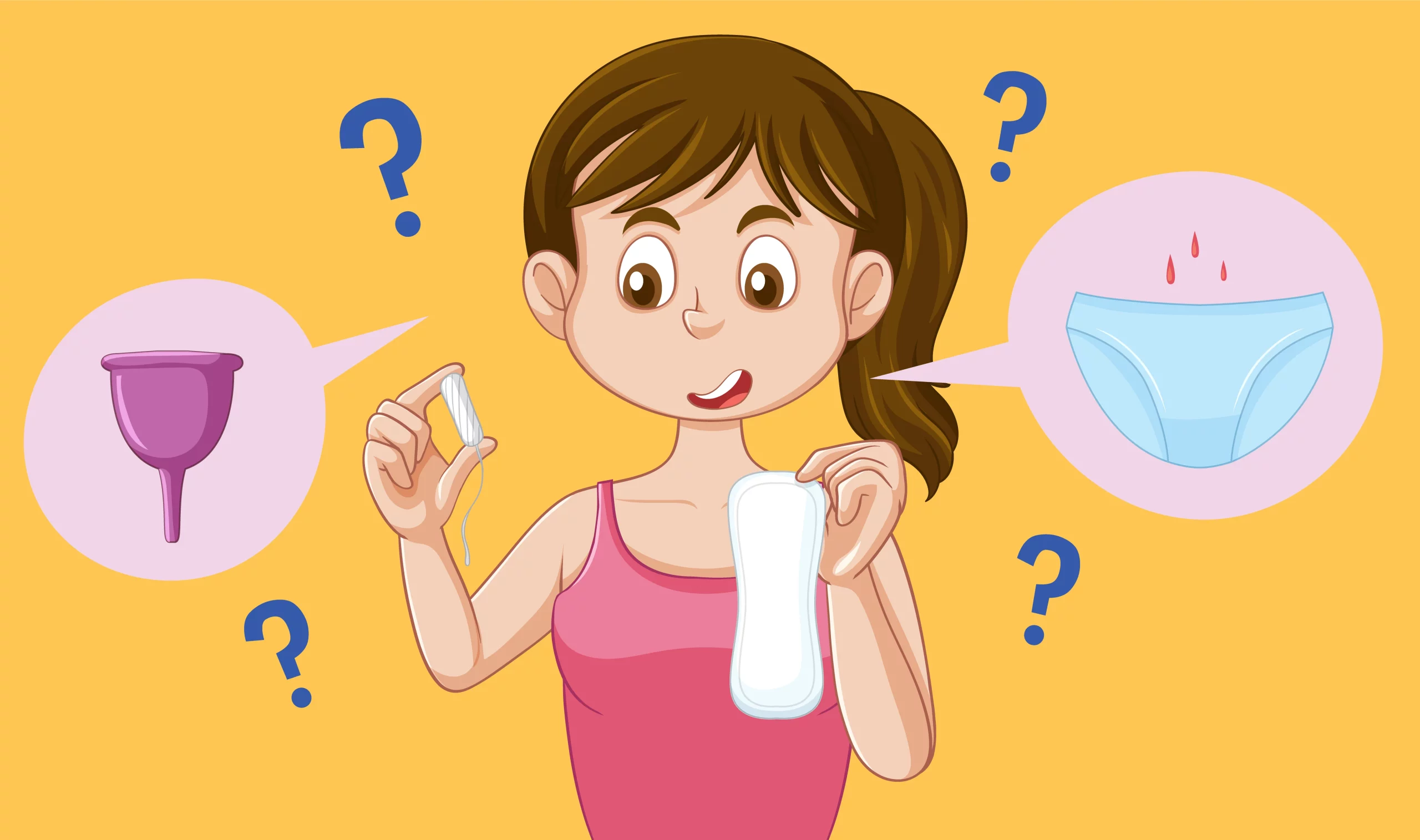Puberty is one of the most transformative phases in a girl’s life. It marks the beginning of adolescence, a time when the body, mind, and emotions start evolving in preparation for adulthood. For many young girls, puberty brings excitement, curiosity, and sometimes confusion, especially when it comes to understanding the first menstrual cycle.
Knowing what happens during puberty for girls, the female puberty stages, and how to identify first period signs can help young women feel more prepared and confident as they step into this new chapter. In this guide, Dr. Anuja Ojha from Care For Her explains everything you need to know about puberty, the changes it brings, and how to navigate your first time period with comfort and confidence.
What Is Puberty?
Puberty refers to the natural process through which a child’s body matures into an adult body capable of reproduction. It usually begins between the ages of 8 and 13 for girls and can vary from person to person. During puberty, hormonal changes trigger physical growth, emotional development, and reproductive maturity. The hormones estrogen and progesterone play a central role in initiating puberty changes, such as breast development, body hair growth, and the onset of menstruation.Understanding Puberty for Girls
Puberty for girls can feel like a roller coaster full of new experiences and emotions. It’s important to understand that every girl’s journey is unique. While some girls experience puberty early, others may go through these changes later, which is completely normal. Some of the common physical and emotional changes during puberty for girls include:- Growth of breasts and tenderness in the chest area
- Development of pubic and underarm hair
- Increased height and body shape changes
- Skin changes, such as mild acne or oiliness
- Mood swings and emotional sensitivity
- The beginning of menstruation (first period)
Female Puberty Stages
Puberty doesn’t happen overnight — it occurs in stages over several years. Understanding the female puberty stages can help girls and parents know what to expect. Stage 1: Pre-Puberty (Before Age 8) At this stage, no visible puberty changes have started yet, but the brain is beginning to send signals to the ovaries to prepare for hormonal activity. Stage 2: Early Puberty (Ages 8–11) This is when puberty changes become noticeable. Breast buds (small lumps under the nipples) form, and pubic hair starts to appear. The body may also begin to grow rapidly. Stage 3: Mid-Puberty (Ages 11–13) Hormonal activity increases. Hair growth becomes thicker, and body odor starts to develop. The hips may widen, and the first period signs might appear — such as mild cramping, mood changes, or white discharge from the vagina. Stage 4: Late Puberty (Ages 13–15) This stage usually brings the first menstrual period, or menarche. The first time period can happen anytime between ages 10 and 15, depending on the individual. Stage 5: Full Maturity (After Age 15) By this stage, most puberty changes are complete. Periods become more regular, and the body continues to mature into its adult form. Understanding these female puberty stages helps young girls feel reassured that the changes they experience are normal and healthy.Recognizing the First Period Signs
The first menstrual cycle, also called menarche, is an important milestone. It signifies that the body has begun its reproductive phase. However, it can be confusing or even a little intimidating without the right guidance. Here are some common first period signs that may appear days or weeks before menstruation begins:- Lower abdominal or back cramps
- Bloating or tenderness in the breasts
- White or clear vaginal discharge
- Fatigue or mild headaches
- Emotional changes like irritability or mood swings
Experiencing Your First Time Period
When the first time period arrives, it might seem surprising or even overwhelming. But it’s a completely natural and healthy event. The menstrual flow usually starts light — just a few drops of blood that may look brownish and gradually becomes heavier before tapering off again. Most first time periods last 3–7 days. It’s normal if your cycles are irregular in the first year as your hormones adjust. Some helpful tips for managing your first period include:- Use comfortable sanitary pads or menstrual underwear.
- Change your pad every 4–6 hours to maintain hygiene.
- Eat nutritious foods to replenish energy and iron.
- Drink plenty of water and rest during cramps.
- Talk to your mother, sister, or doctor if you feel anxious or have questions.
Emotional and Social Changes During Puberty
Apart from physical changes, puberty brings emotional and social shifts. You may feel more independent, curious, or sensitive. Peer influence, body image concerns, and mood swings are common during this phase. Talking openly with parents, teachers, or healthcare professionals helps make puberty for girls a more positive and informed experience.When to See a Doctor
It’s important to consult a gynecologist if:- You haven’t had your first period by age 16.
- Periods are extremely painful or heavy.
- You experience sudden changes in menstrual patterns.
- You have unusual discharge or itching.
Frequently Asked Questions (FAQs)
-
What is puberty and why does it happen?
Puberty is the body’s natural process of maturing into adulthood. It happens when hormones like estrogen and progesterone trigger growth and reproductive development. -
What are the first signs of puberty for girls?
Common early signs include breast development, body hair growth, mood changes, and vaginal discharge before the first period. -
When does the first period usually occur?
The first time period generally happens between ages 10 and 15, depending on the individual’s development. -
How can I tell my first period is coming soon?
First period signs include cramps, breast tenderness, fatigue, or white discharge a few weeks before menstruation starts. -
How should girls manage their first time period?
Using sanitary pads, maintaining hygiene, eating well, and staying relaxed are the best ways to manage your first period comfortably.

